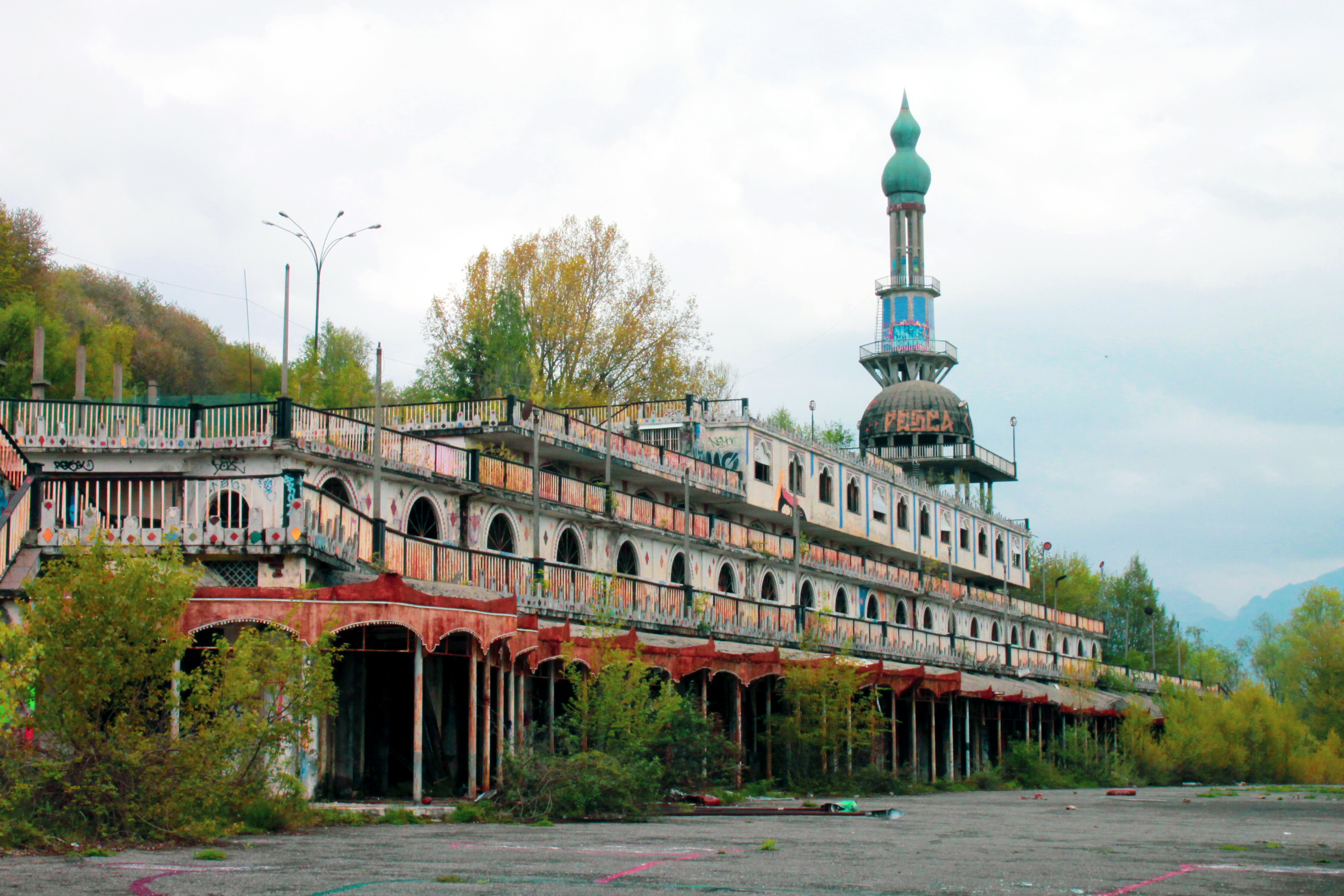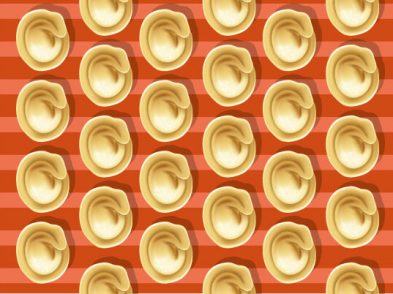The road to arrive there is now only open at specific times, mainly to allow mourners to visit their dead at the local cemetery, while the remnants of the settlement are considered by some to be an environmental hazard. Consonno is a ghost town nestled in the northern part of Italy known as the Brianza, a hamlet of the Olginate municipality in the province of Lecco. However, it was not always so. From the Middle Ages until the beginning of the 1960s, Consonno was a slowly diminishing share-farming community surrounded by fields and chestnut forests only reachable by mule.
In Consonno, it’s always a party
On January 8, 1962, everything changed. The entire town of Consonno was bought for 22,500,000 lire by a man with a dream. The ambition of industrialist, Grand Official Mario Bagno, Count of the Valle dell’Olmo, more commonly known as Count Mario Bagno or “Count Amen” to the 60-odd local inhabitants who were forced to leave the homes they did not own, was to create a “City of Toys”, a huge complex halfway between a shopping mall and a casino, which would provide visitors with every kind of entertainment imaginable.
Born in Vercelli on February 24, 1901, Bagno was a successful entrepreneur, specialised in building roads, highways and airport runways all over Italy. Prompted by the economic boom of the 1960s and attracted by Consonno’s vicinity to the increasingly affluent city of Milan, Bagno began by demolishing almost everything in the town, except the church of San Maurizio, the parish priest’s house and the cemetery, before adding an access road to the locality. Then, in 1965, six years of construction work began.
On arriving, painted metal signs announced: “In Consonno, it’s always a party”, “Consonno is the smallest but the most beautiful place on earth” and “In Consonno, the sky is bluer”. The two-storey main building comprised an arabesque shopping centre on the ground floor with dozens of stores dominated by a 30-meter-high minaret, whilst the first floor contained small apartments for those who wished to holiday there. With a strange and garish mixture of architectural styles, the entrance was through the door of a medieval castle. Chinese pagodas, Egyptian sphinxes, Renaissance fountains and Doric columns decorated the site, whilst guests could stay at a luxury establishment called the Grand Hotel Plaza, enjoy the open-air dance floor, lose their money at gaming rooms or sip coffee in one of the seven bars. Even a fake cannon transported from Cinecittà was on display. To make it possible for visitors to see a nearby lake, Bagno had a hillside impeding the view flattened by 27 meters with explosives and bulldozers. The plan was that his citadel should grow year by year with the addition of football and basketball fields, a bingo hall, a swimming pool, tennis courts and mini-golf, a small car racing track, an ice rink, a fun fair and a zoo, but his aspiration was destined not to be fulfilled.
Despite bureaucratic and other delays frequently caused by Bagno, who often had something built one day and then changed his mind and had it pulled down the next, in the late 1960s and early 1970s, the town briefly enjoyed success, attracting hoards of pleasure seekers. Famous artists like Adriano Celentano, Mina, Pippo Baldo, Milva and the Dik Dik vied to perform there, but by 1972 the novelty had begun to wear off and crowds dwindled. The fatal blow to the “City of Toys” came in 1976 when heavy rains, exacerbated by the undermining of the local hydrogeological equilibrium caused by the building, provoked a landslide that destroyed the only road into town.
In 1981, in a last-ditch attempt to revive Consonno’s fortune, Bagno decided to restore part of the Grand Hotel Plaza and convert it into a rest home for the elderly, which would continue to operate until May 2007 when it was transferred to another town in Valsassina. After the death of the Count at the age of 94 on October 22, 1995, the property passed to his heirs, including his son, Osvaldo, and daughter, Maria Teresa.
In July 2007, almost immediately after the rest home was relocated, word went out on the web that a “Summer Alliance” clandestine rave party was to be held there. The influx of more than a thousand marauding youth devastated what was left of Consonno. For a time, this was regularly followed by other drug- and alcohol-fuelled happenings, during which the remaining buildings were trashed and graffiti painted everywhere.
Rumours of the imminent sale of the “City of Toys” continue to circulate but, until now, with no apparent results. In the meantime, the Amici di Consonno cultural association of volunteers, including ex-residents and their children and grandchildren, was set up in 2007 and is dedicated to raising awareness about the history of the town and to promoting its redevelopment.
In the late 1960s and early 1970s, the town briefly enjoyed success, attracting hoards of pleasure seekers.
For information about the Amici di Consonno, write to amicidiconsonno@gmail.com or see www.consonno.it









